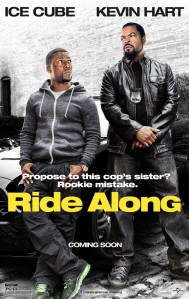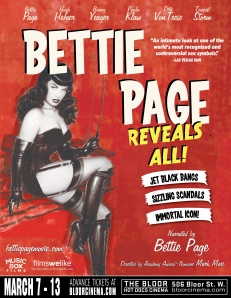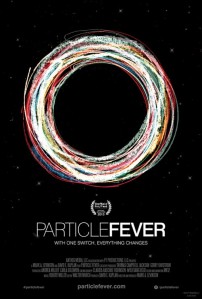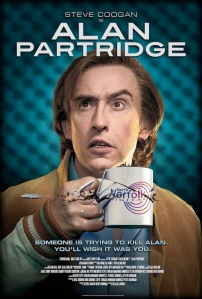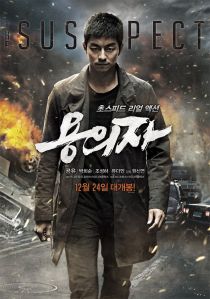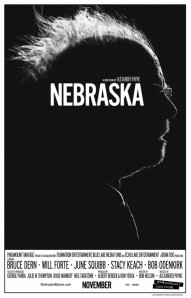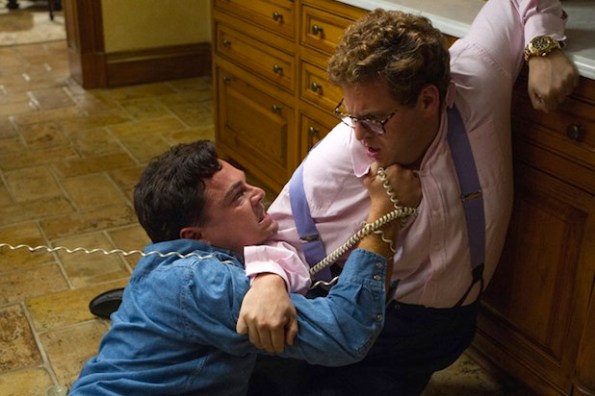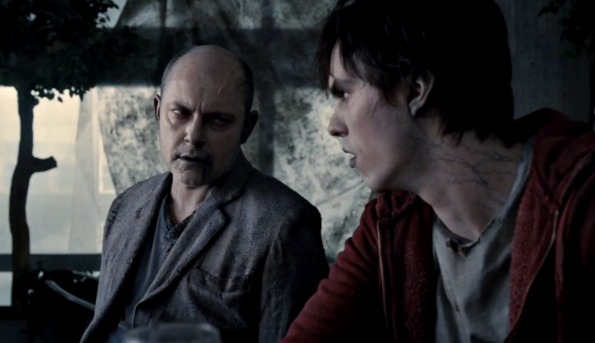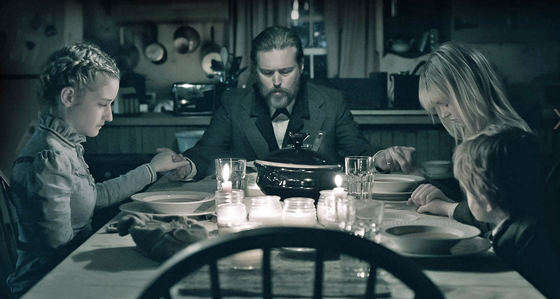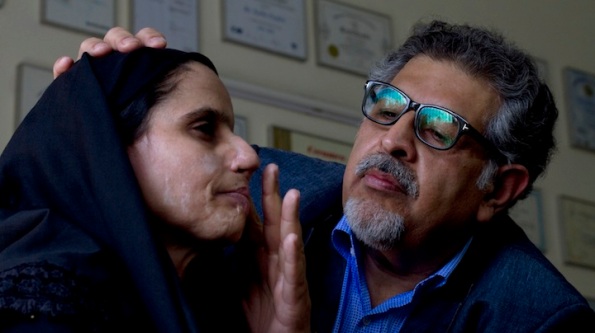CrowdFUNding: Jamie Tiernay’s Kenny vs. Spenny: On The Road
By: Addison Wylie
It’s no competition that Kenny vs. Spenny – whether you like it or not – has become a staple in Canadian pop culture.
Kenny Hotz and Spencer Rice’s reality television show featured the buddies going toe-to-toe with each other in various matches such as Who Can Win a Ten Mile Race and Who Can Stay in a Haunted House the Longest. However, as the competitions became increasingly irreverent and Hotz’s strategies more torturous to his mensch sidekick, the pair’s cult following grew as stakes got riskier with episodes such as Who Can Drink More Beer and Who Can Get Further With The Other Guy’s Mom. It was a classic case of Schadenfreude.
The show’s been off the air for over three years, and the men have spun off to do their own side projects; leaving Kenny vs. Spenny to settle.
The high demand of a comeback may be what started the inception of an on-the-road reunion. Hotz and Rice are teaming up to hit various parts of Canada and hold Q&As, screen segments from the show, and hand out autographs.
Jamie Tiernay, who worked on Kenny vs. Spenny as a crew member on Kenny’s side of the show, has started a Kickstarter campaign to accumulate funds to make a documentary about the tour.
Learn more below:
The Kenny vs. Spenny On The Road Tour Documentary Kickstarter Campaign is about documenting these two cult legends on their KVS tour across Canada.
Having worked with Kenny and Spenny for over 10 years I’ve convinced them to give me unrestricted access to the tour, themselves and the final cut! I’m going to be poking, prodding, manipulating and uncovering shit you couldn’t even imagine in your wildest wet KVS dreams. A road trip tour friendship extravaganza with dick jokes, fart jokes, drunken nights, insane fans, hot fans, dumb fans and shit that’ll make you pee your pants.
With this $46,000 campaign goal we’ll be able to shoot the whole west coast tour, edit and deliver a pretty kick ass film BUT there’s more tour locations and dates to come this year. So if we PASS OUR GOAL it’ll let us shoot more tours, more insanity and give more editing time to make this the most insane Kenny vs. Spenny documentary film ever!
Visit Jamie Tiernay’s Kickstarter page for more details.
My Two Cents:
Tiernay’s documentary sounds and looks promising, but $46,000 sounds like an inflated random number. However, I trust Tiernay, who obviously has the best intentions for his film and clearly knows how to handle these types of projects. After all, equipment rentals, transportation, and accommodations do add up rather quickly.
I hope the doc doesn’t take on usual road movie and concert film tropes these projects tend to helplessly accept (see: Vince Vaughn’s Wild West Comedy Show: 30 Days & 30 Nights – Hollywood to the Heartland and any live event featuring a member of the Jackass crew). Tiernay’s brief video preview featured enough farting around to make me weary.
But, Tiernay also appears to be focused on the love/hate friendship between Hotz and Rice. As a possible investor, this is a hopeful opportunity that could potentially propel the film in a surprising direction. This could shed more of a natural light onto these two performers.
I wish Jamie Tiernay luck with his upcoming film. It should, at the very least, act as that proper fix for Kenny vs. Spenny diehards.
**********
All italicized statements regarding Kenny vs. Spenny: On The Road are provided from their respected crowdfunding sources. Wylie Writes is not responsible for funds attached to these productions and we do not hold any accountability.
This project is that of the filmmaker’s. Use your own discretion.
Ride Along
Here’s the thing. I’m not mad at Ride Along. I’m not even frustrated with Tim Story’s buddy cop comedy. I’m not miffed, put off, or even slightly perturbed with it. I’m just kind of numb. Barely laughing in a comedy will do that to a person.
I’m writing this review moments after watching the thing because I’m worried I’ll start forgetting portions of it. This vehicle for Ice Cube and Kevin Hart is slowly dissipating from my head and into thin air.
Ride Along is harmless, but it also doesn’t meet its comedic mission statement.
Story’s film came close to making me heartily chuckle. I mildly snickered before the jokes were needlessly stretched by Hart’s incessant motor mouth and Cube’s raised brow.
Hart didn’t amaze me with his stand-up comedy in last year’s Let Me Explain (which Story co-directed), but I think he’s a performer who works better with another person on screen. He appears to be more self-assured with his deliveries when paired with someone to bounce zingers on and off of – nothing wrong with that at all. He just needs stronger material.
My light giggles happened when Hart’s do-gooder character, James, was thrown into a situation where he’s left to flounder. Like Hart has shown in his stage routine though, he doesn’t know when to stick his landing and wrap up the tomfoolery. Story, who’s supposed to know this comedic timing even more, lets Hart ramble until the script calls for an interruption.
Cube usually knows how to play a good straight man, and he continues to prove this in Ride Along. In the film, he plays a protective older brother to James’ girlfriend and is willing to test James to see if he’s “man” enough to be welcomed to the family. Cube, who has shown recently that he loves playing these amusing intimidators, is able to hold his own next to Hart’s frantic personality, and he’s able to competently keep the scene on target despite Hart swinging on tangents.
What cripples Ride Along is its formulaic script and Tim Story’s uncaring attitude. Greg Coolidge, Jason Mantzoukas, Phil Hay, and Matt Manfredi (that’s right, four writers!) provide the skimpy set-ups and then rely on their leads to jumpstart the comedy that’s supposed to ensue. This system may please those who are attending Ride Along to see Hart “have at it”, but the situations don’t provide a heck of a lot of groundwork for these charismatic actors to spring off of.
Cube, who is also attached as one of the film’s producers, looks as if he’s always waiting for more in a scene. As a producer, you would think he’d take this opportunity to bring the writers and Story aside to figure out ways to punch up the material.
Story doesn’t exactly have a great directorial track record when it comes to action flicks (Fantastic 4: Rise of the Silver Surfer, Taxi). With Ride Along, Story doesn’t add any originality to shoot-outs or car chases, and he doesn’t elevate the quality above any miscellaneous early-2000’s action/comedy starring Martin Lawrence.
There’s not a whole lot going for Ride Along in the realm of booming action or side-splitting comedy. All it has are two leading men trying to do everything they can to make this fluff into something noteworthy. But, when the lifeless odds are stacked as conventionally as they are against Hart and Cube, I’m surprised the actors didn’t surrender altogether.
Bettie Page Reveals All
I appreciate Academy Award nominee Mark Mori wanting to “reveal all” about pinup model Bettie Page with his new doc literally titled Bettie Page Reveals All, but I feel as if he may have gone too far right out of the gate.
The documentary gives viewers a confidential look into Page’s life whilst using vintage privy interview answers from the model herself to string along narration.
The documentary’s structure could – and sometimes does – work wonders for Mori to bring truth to his work, and to rightfully respect Page’s life and image. My problem with his execution is his underdeveloped knowledge of how to work this filmmaking angle.
Bettie Page Reveals All begins with lots of famous faces singing praise for Page’s “naughty but nice” influence on pop culture. Burlesque performers and fashionistas join in as well. This is a good enough start. These scenes are here to foreshadow how subversive Page’s playfully sexual work will become.
These clips are then followed by cutaways from Page’s funeral service, where we see close friends and family in mourning. These scenes are only here to establish that the film’s iconic subject has passed on. Wasn’t there an alternate way to depict this that didn’t feel so…nosy?
Already, Mori oversteps as a documentarian. I can’t speak for everyone but personally, these segments made me feel as if I was intruding on something very personal. I know Mori has to live up to his title’s name, but private functions like these should be off limits. It’s an unwritten rule.
The next few scenes give movie goers an unsheltered look at Bettie Page’s life before the fame. Hearing a deceased Page describe the abuse she was put through as a child and through her budding life in New York is supremely tough to listen to. The audio track Mori is sampling from also sounds as if it’s eroding, which makes us have to lean in and listen more carefully to Page’s unsettling recapping.
As someone who knew very little about Bettie Page’s life and career before entering Bettie Page Reveals All, Mark Mori actually does a decent job informing. The condition of the audio gradually cleans itself up, making Page’s narration easily attainable. The journey is straightforward and memorable, and that feeling of being an intruder is shown the door.
What doesn’t measure up is how technically inadequate the actual doc is when placed beside its subject’s vital life. It hurts the film’s credibility.
Mori has obviously been inspired by 2002’s film adaption of Robert Evans autobiography The Kid Stays in the Picture. He takes pictures from Page’s past, and animates them to her speech. However, The Kid Stays in the Picture found an ebb and flow with Evans’ readings. Mori’s doc, on the other hand, feels too much like a slideshow – a cheap one, at that.
The doc doesn’t have the appearance of a movie that’s been thoughtlessly slapped together, but the condition of Bettie Page Reveals All is in critical shape. Different uses of footage ranging from degraded footage to cartoons don’t find an even balance with the material, and a fair amount of images don’t play well when blown up. Graphics and subtitles look flat and unappealing as well. This is an example of a slipshod doc that desperately needed more post-production polishing.
But, just like Mori’s boundary misstepping, the doc eventually fixes itself and turns in some strong work. Unfortunately, the quality control shapes up just as the film is winding down.
The filmmaker’s wisest decisions are with the inclusion of outsiders lending their perspectives on Page’s sexual significance. Most of these opinions pop up during the latter part of the film, which breaks up the doldrums and adds a refreshing change of pace to the documentary.
There’s no denying that with more time, Bettie Page Reveals All wouldn’t have looked and felt so shabby. Luckily, there’s enough content in the doc to avoid it being a write-off altogether. But, how much technical clumsiness will audiences endure in order to get to the centre of this craggy Tootsie Pop?
Particle Fever
At first, Particle Fever is a tough movie to be enthusiastic about if the evolution of the LHC (the Large Hadron Collider) doesn’t already make you jazzed.
Since the film revolves around those physicists who were involved with the creation of the LHC, Particle Fever could’ve cashed in on the pop culture craze The Big Bang Theory has materialized. The topic at hand would’ve been taken seriously, but the physicists would’ve been played up for humour. A wacky instrumental score full of rattles would’ve been set to these intelligent people getting excited about blips and scatter plots. I’m so glad filmmaker Mark Levinson didn’t go down that alley with his uniquely personable documentary.
The LHC may be the main focus to those educated theorists and experimentalists featured in the doc, but Levinson sees another focal point. Particle Fever follows a select number of workers, sets the science slightly aside, and represents these physicists as relatable people who have a love for the game.
This directorial manoeuvre doesn’t take their prestigious titles away from them. It simply retains a connectivity that could’ve been lost if Levinson solely stuck with the complicated facts behind the crafts.
There are bits of humour sprinkled throughout – mostly from experimentalist Monica Dunford. She definitely has some quirky qualities to her that can be seen on any episode of HBO’s hit Girls, but her passion for hands-on duties is understandable and the explanations she verbalizes are clear without condescension.
The same can be said about physicist David Kaplan. At a lecture, Kaplan explains to his crowd that there are two ways of describing their mission to people: one that is broken down so it’s comprehendible to anyone, and one that explains what they’re actually doing with the LHC. Ironically, both of his explanations are well spoken. Levinson is then able to use these snippits and take full advantage of them to describe the motives behind the development of a major scientific breakthrough.
The largest compliment I can give the filmmaker is that he’s made an intimidating subject absolutely identifiable and open. The data describing the LHC is inputed well in his documentary with the use of animations and fluent editing. What’s even more accessibly grasping is the excitement behind the science.
What’s slightly disappointing, for invested movie goers, takes place within the last leg of Levinson’s doc. The revelations in Particle Fever, justifiably, grab the attention of those involved with the experiment at hand. This transfixion also veers the doc’s attention away from coherency and strictly on immediate intricate information. Levinson’s film is hijacked by people only willing to ramble off procedures and conclusions. Although we see the eager attentiveness on screen, it’s hard for the average movie goer to tap into.
Levinson’s flick may slowly deteriorate, but that shouldn’t damper the doc too much. For a film about advanced science to sustain interest for as long as Particle Fever does, qualifies the doc as a moderate success.
Alan Partridge
North Americans have Will Ferrel’s Ron Burgundy, an on-camera anchorman who’s self-centred arrogance has him chewing down on his own foot often. In Europe, the Brits have Steve Coogan’s Alan Partridge. Partridge is an egotistical radio personality obsessed with a celebrity image and a winning smile.
Where Burgundy can read on screen as a pompous jerk with a heart of gold steeped in spoof misogyny, Partridge is more endearing. He always finds a way to slip into the spotlight, and try to have others sympathize with him or view him as an inspirational icon. However, he’s just as easily flustered and frustrated when he isn’t included.
Steve Coogan’s amusing character takes a step away from real life airwaves and his UK Television show I’m Alan Partridge to star in his first leading vehicle self-entitled Alan Partridge. The film is better known as Alan Partridge: Alpha Papa across the pond, but it’s a title that may have had others scratching their head over its otherwise silly meaning.
That adjustment is what’s going to make Alan Partridge’s overseas success interesting to observe. I think it helps outsiders taking a chance on the film to know a little bit about Partridge before paying for a ticket. His fumbled muttering, and his self-absorbed attitude may have the general North American movie going public growing irritated. However, if they have that initial information or can quickly jive with the lead doofus, they may have themselves as good a time as us fans.
Personally, I found Alan Partridge to be a good comedy that met the goals it set out to achieve. Director Declan Lowney manages to do what most SNL flicks have difficulty doing – taking a sketch character and having him carry a film all the way until the end. It also helps that Coogan is still playing the cocky host splendidly.
Alan Partridge plays out as a movie Mike Myers would’ve jumped at the chance to star in. I wouldn’t call Lowney’s film a laugh-out-loud riot as Myers’ past comedies have been (pre-Love Guru, mind you), but there’s a consistent flow of titters and chuckles that will have you pleased with most of the material. Although, a scene featuring Alan getting caught with his trousers down will definitely shock you into hysterics.
The story of a disgruntled, newly fired radio personality taking the station and its employees hostage doesn’t feel rote, as does the decision to make Coogan the hero despite the role’s narcissism. Partridge, being the unctuous goofball he is, manages to find fame in dire circumstances. He completely understands the danger of the takeover, but is strangely complimented when he’s chosen as a messenger for the police and a co-host for a radio show during the malicious siege.
Lowney’s modest comedy will satisfy the Alan Partridge fan base as well as fans of Coogan’s dry wit. The main question, however, still stands: how the hell is this going to perform outside the UK?
I won’t be surprised if Alan Partridge doesn’t drum up new anticipation during its North American theatrical release, but I won’t be disappointed if this type of movie finds cult life on VOD.
The Suspect
You can’t say The Suspect was mismarketed. All that spectacular stunt work that’s flashed in the film’s trailer is there, and it’s still enthralling in context. What the trailer doesn’t capture is how overblown Won Shin-yun’s film is. Maybe that’s for the better since the lethargic narrative is a major turnoff.
First, the film’s key strength: Shin-yun knows how to map out an action sequence. There are more than enough car chases and crashes in The Suspect to get anyone’s adrenaline pumping. The pursuits are no where near as compelling as the ones movie goers will see soon in Need for Speed, but the chases in The Suspect wet our whistle well. Same goes for the hand-to-hand combat and the gunplay.
My only suggestion for Shin-yun is he shouldn’t feel the need to present his work as anymore generic as clichéd American action fests in order to capture some sort of recognizable excitement. The camera work in The Suspect is either too closed in, shaking around like crazy, or both – which causes some of the fine choreography to be lost in translation. The sloppily choppy editing is also to blame.
There are way too many add-ons set on driving up the film’s intensity. Shin-yun is trying too hard to convince the audience what they’re watching is impressive and energetic. That said, Shin-yun could possibly be shovelling on more of these contrivances to cover up how dull Im Sang-hoon’s revengeful script plays on screen.
Sang-hoon has a very hard time adding onto his characters or the nature of getting even. Instead of building off of his own material, he plunks a lot of “stuff” on top of unfolding events and the emotional characters – none of which are interesting or thrillingly intriguing. He attempts to add twists and new motives, but inverts his characters in a way that make each person on screen become more complicated than they need to be.
The Suspect lacks confidence. The film has the appearance of a movie that knows how baggy it’s getting, and is constantly vying to win back its audience while trying to make ends meet with its own story.
The Suspect does have the look and feel of a smart thriller. As I often drifted into a dazed state, I found myself wondering what a Bourne endeavour would look like through Won Shin-yun’s filmmaking vision. In time, I think he’ll follow the same steps as Fast and the Furious filmmaker Justin Lin and grow to have what it takes to direct a franchise.
Unfortunately with The Suspect, Shin-yun finds himself spinning a number of plates. It’s neither enjoyable for him nor his spirited audience.
Nebraska
I’ve been selling Nebraska to people as “a charming version of Fargo without the violence”. That gets attention fairly quickly.
Alexander Payne’s drama, however, is more quaint than quirky. Nebraska’s prominent road trip involving a distracted father Woody (played by Bruce Dern) and his patiently courteous son David (played by Will Forte) coasts along flat landscapes. The two converse about the past and the exciting current possibilities of million dollar winnings Woody received in the mail. The relationship between Dern and Forte is just one of the many likeable building blocks to this heavenly appealing film.
Practically everyone doubts Woody’s grand prize, saying that it’s a sham. Woody’s wife Kate (played by June Squibb) is also part of the crowd, often reminding her dullard husband of his unhelpful, checked-out personality.
David has a feeling that Woody’s prize is bologna too, but he can’t help but go along with his father’s happiness. David doesn’t hope to see his Dad fail. He’s going along for the ride because he shares the same sort of dream chasing. He even tells his mother he just wants to give his old man hope.
Payne shows his audience how far different types of hereditary characteristics can travel. We meet the men of the Grant family throughout the movie. The clan can be often seen together moderately stimulated by television while hesitantly trying to make small talk. During these moments, we observe that David – while taking on his father’s traits – can see the pattern.
Nebraska is wise, but also very funny. Screenwriter Bob Nelson understands the nature of telling dry readings, and Payne knows perfectly well how to direct his actors in accordance to the script.
Once Dern and Forte are set in scenarios that cause them to put their mission on hold, the movie turns into a collection of vignetted character driven pieces. We visit a cemetery where Kate calls out the dead. She remembers the flaws over strengths, but never with cynicism. Another scene has David and brother Ross (played by Bob Odenkirk) retrieving “stolen” equipment and leaving their worried parents to cover for them. Actually, this sneaky sequence plays out as a cuter version of Sideways’ unforgettable wallet sting – also directed by Payne.
Nebraska doesn’t feel like a movie that pretentiously puts its story aside, but rather understands that development – not comedy – is the main priority. We see Forte and Dern go through extensive characterizations. Like Forte’s David, Nelson and Payne are patient with how the pieces play out, making each step convincing. This is what separates the drama from other family adventures that follow a routine of “drive, stop, make the audience laugh, drive again”.
The cinematography is also a stand out. It’s beautifully shot in black-and-white giving the composed film an antiqued look. The shooting style adds to the film’s plainness without making the movie appear drab itself.
You often hear people describing a filmmaker’s movie as “a film with a warm heart and a kind soul”, and it couldn’t be more true with Nebraska. Alexander Payne’s film had me smiling throughout and I was quite swept up by how honest the film was being with its bare portrayal of a family tree rooted in the outskirts of Americana. It’s touching and delightful. I dare you not to be grinning by the final frames.
Human Rights Watch Film Festival 2014: Saving Face
By: Addison Wylie
The Human Rights Watch Film Festival has made me exhale an astonished “wow” twice now. That’s a compliment I haven’t admitted to in a while. It’s absolutely true in the case of Daniel Junge and Sharmeen Obaid-Chinoy’s harrowing doc Saving Face.
The mighty film, which deservedly won 2012’s ‘Best Documentary Short’ Oscar, shows audiences how disturbingly frequent and heartbreakingly affective acid crimes are. Every year, numerous Pakistani women are dosed with different forms of acidic attacks. The victims are left wondering what they did to deserve such torture and public humiliation.
Impressively, Junge and Obaid-Chinoy interview the alleged attackers – most of which are the husbands. They give emotionless stories claiming they had nothing to do with the burns, and that they’ve been wrongfully accused. The shiftiness in their testimonials as well as their unsupported proof doesn’t hold water – it’s blatant to see that. The filmmaking duo don’t have an agenda to make all Pakistani men look like monsters. They simply ask questions and let their cameras roll. What they capture are sit downs with these apathetic, terrible contributors to lifelong injury.
The act of acid crimes gets lots of attention from those who want to bring justice. A Londoner plastic surgeon, Dr. Mohammad Jawad, flies to Pakistan to survey the pandemic and offer his assistance to reconstruct facial features. We see in every instance that he’s on screen how he tries to maintain his composure while his feelings of sadness and frustration seep out.
For a film that clocks in at under an hour (Saving Face is 52 minutes), the filmmakers pack a lot of development into the film. Junge and Obaid-Chinoy select individual subjects and open their lives up to us. The women, who embrace the filmmakers’ affection, show us what their living conditions are, take movie goers to the original spot where they were attacked, and explain personal barrenness. Saving Face gives audiences a very intimate and utmost honest view behind the veils and burqas without anything feeling too intrusive.
Because these victims are worried that a similar attack will happen in the near future, audiences are also shown other resources where these women can seek protection. We get an unbarred look at ASF – the Acid Survivors Foundation – and the kind saints who seek a change regarding the consequences the initiators face post-crime.
Saving Face is a powerful, well made and competently justified piece of work. The doc may seem quick, but nothing is ever cut too short. It has an impact in both its emotional connection and its respectful representation that beefier films would be jealous of. Just “wow”.
***********
Catch Saving Face at Toronto’s Human Rights Watch Film Festival on Sunday, March 2 at 3:30 pm at the TIFF Bell Lightbox.
Solo Speaks: A One-On-One with Annie Clark
By: Addison Wylie
After being featured at Toronto After Dark, the indie Canadian thriller named Solo is making a more public appearance with a theatrical run at Toronto’s Carlton Cinema.
Carlton Cinema is a very appropriate venue seeing as the theatre and the film both share a level of independence. Carlton Cinema is a quaint theatre that feels as if you step into another world of movie watching, and Solo’s lead is left in her own world to try surviving camp initiation.
Solo serves as a debut for writer/director Isaac Cravit, marking the flick as his first feature length film. The spooky movie is also actress Annie Clark’s first foray into theatrical films. It’s a big move for Clark who is often on screen by herself and having to support the eeriness Cravit has materialized.
I wasn’t too hot on Solo as a whole. It started off strong, and progressively meandered its way into a final product that lacks punch or chills. However, Clark does a commendable job at holding her own. She turns in a promising performance that makes the audience eager to see what else she’ll do with her budding career.
Wylie Writes correspondant Sky Wylie sat down one-on-one with Clark to talk shop about Solo. The two also discuss Clark’s departure from Degrassi: The Next Generation, how a real life camp experience inspired her hopes of becoming an actress, and whether she sees a future for Isaac Cravit directing tense fare.
Listen to the free-form interview here:
**********
Solo is now playing at Toronto’s Carlton Cinema. Click here for showtimes!
Read my review here!
Do You Tweet? Follow These Tweeple:
Solo: @SoloTheMovie
Annie Clark: @AnnieJClark
Sky Wylie: @SkyBaby5
Addison Wylie: @AddisonWylie


